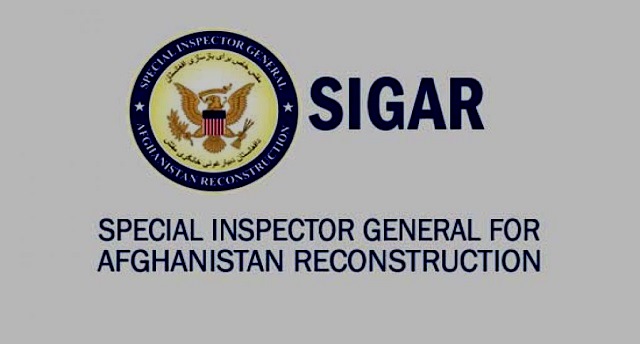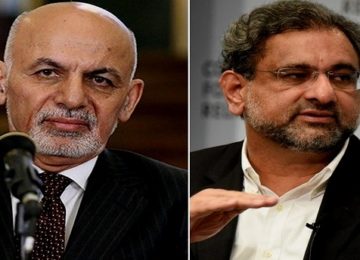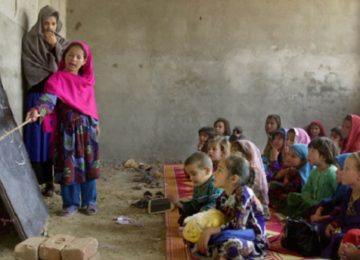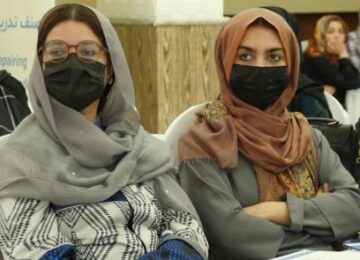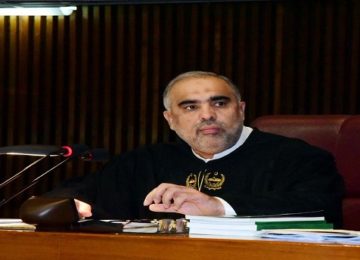March 28, 2019
SIGAR’s recently released 2019 High-Risk List highlights major areas of the reconstruction effort in Afghanistan that are at the risk of waste, fraud, abuse, mismanagement, or mission failure. Alerting Members of the 116th Congress and the Secretaries of State and Defense, the List identifies eight risks to the reconstruction effort that might persist or arise in the wake of any peace agreement: Widespread Insecurity, Underdeveloped Civil Policing Capability, Endemic Corruption, Sluggish Economic Growth, Illicit Narcotics Trade, Threats to Women’s Rights, Reintegration of Ex-Combatants, and Restricted Oversight.
Highlights from the report:
— Policymakers should be planning for what may come in the days, weeks, months, and years after any peace agreement is reached. The report highlights areas of the reconstruction effort that are currently at serious risk and points out grounds for reasonable concern regarding risks that may persist, be magnified, or emerge despite – or even because of – a peace deal.
— Without financial support from international donors, the government of Afghanistan cannot survive. Should peace come, if that peace is to be sustainable, it will come at an additional price that only external donors can afford.
— There are over 300,000 Afghans currently serving in the security forces, most of whom are armed. If, because of a loss of financial support, their paychecks were to stop coming, this could pose a serious threat to Afghanistan’s stability.
— A failure to peacefully reintegrate as many as 60,000 heavily armed Taliban long-term would threaten any peace agreement as disaffected former Taliban who may have been expecting a peace dividend may return to violent and predatory behavior.
— The U.S. and other donors have prioritized improving the situation of Afghan women. A return to systematic repression of Afghan women would quickly diminish Congressional and public support for continued assistance to Afghanistan and, in the process, threaten any government reliant on that support. The viability of a post-agreement Afghan state may well depend upon whether women’s rights are protected in both word and practice.
— If the U.S. reduces its presence in Afghanistan but feels compelled to provide significant financial support for reconstruction, there may be little choice but to provide a greater proportion of funding as on-budget assistance. But if that road is taken and conditions are lacking, we may as well set the cash ablaze on the streets of Kabul for all the good it will do.
Key points from the report:
Widespread Insecurity
— The latest strength figure shows that the ANDSF’s ranks have decreased by 9,016 personnel since the January 2017 High-Risk List. High ANDSF casualty and AWOL rates contribute to high attrition, which erode the force’s capability gains and create a continual need to recruit and train new security-force members.
— The most enduring threat to the Afghan reconstruction effort, and to U.S. taxpayer investment in that effort, has been an ongoing and resilient insurgency and the presence in Afghanistan of terrorist groups such as Islamic State-Khorasan (IS-K). The Taliban insurgency is not monolithic, and the postwar intentions of the various terrorist and narco-criminal networks that also operate in Afghanistan present another set of variables to be considered.
Underdeveloped Civil Policing Capability
— Effective policing will require a force that gives citizens the presumption of innocence, rather than anticipating and taking preemptive offensive operations against perceived threats.
— In the event of a peace agreement, there is no comprehensive strategy for a competent civil police force backed by the rule of law.
Endemic Corruption
— Failure to effectively address systemic corruption means U.S. reconstruction programs, at best, will continue to be subverted and, at worst, will fail.
— The Afghan government prioritizes its anticorruption commitments when pressured by international observers. If donors do not maintain this focus on anticorruption, it is unlikely that the Afghan government will follow through on its commitments.
Sluggish Economic Growth
— Slowing growth raises broad concerns regarding the sustainability of Afghanistan’s recovery and thus its long-run economic prospects, whether or not there is a peace agreement. According to the DOD, full self-sufficiency by 2024 does not appear realistic, even if security or economic conditions change dramatically.
— A peace agreement is unlikely to immediately overcome the many enduring barriers to economic growth – including limited skilled labor, the lingering effects of near-continuous conflict over multiple decades, deficits in physical and institutional infrastructure, heavy reliance on foreign donor support, and widespread corruption.
Illicit Narcotics Trade
— The lack of sustained institutional capacity at all levels of government undermines the country’s development and ability to address the production and sale of illegal drugs.
— The opium trade plays a significant role in the Afghan economy and it is difficult to see how a peace accord between the Afghan government and the insurgency would translate into the collapse or contraction of the illicit drug trade.
Threats to Women’s Rights
— A potential peace agreement raises questions about the extent to which those rights guaranteed in the Afghan constitution will be protected in an Afghanistan in which the Taliban plays a political role.
— Some experts believe that a precipitous withdrawal of U.S. forces could lead to the deterioration of political and economic freedoms currently enjoyed by Afghan women. Official Taliban statements involved in the peace negotiations confirm such risks.
Reintegration of Ex-Combatants
— Successfully reintegrating an estimated 60,000 active Taliban fighters into society and transitioning them into a sustainable livelihood will be a complex and long-term process with social, economic, political, security, and humanitarian dimensions.
— A weak economy will likely offer few sustainable livelihood options for reintegrating Taliban fighters. Ongoing insecurity, political uncertainty, poor social cohesion within a population traumatized by decades of war, and weak governance and rule of law will probably pose serious challenges to reintegration efforts.
Restricted Oversight
— Donor countries are expected to finance approximately 51% of Afghanistan’s FY 2019 national government spending of $5 billion. Yet, the Afghan central government’s capabilities are generally weak and it often lacks the capacity to manage and account for donor funds.
— Given continuing reconstruction needs-and the possibility that on-budget funds could benefit the Taliban directly should the group be incorporated into the Afghan government-risks to providing monies on-budget remain particularly high.



